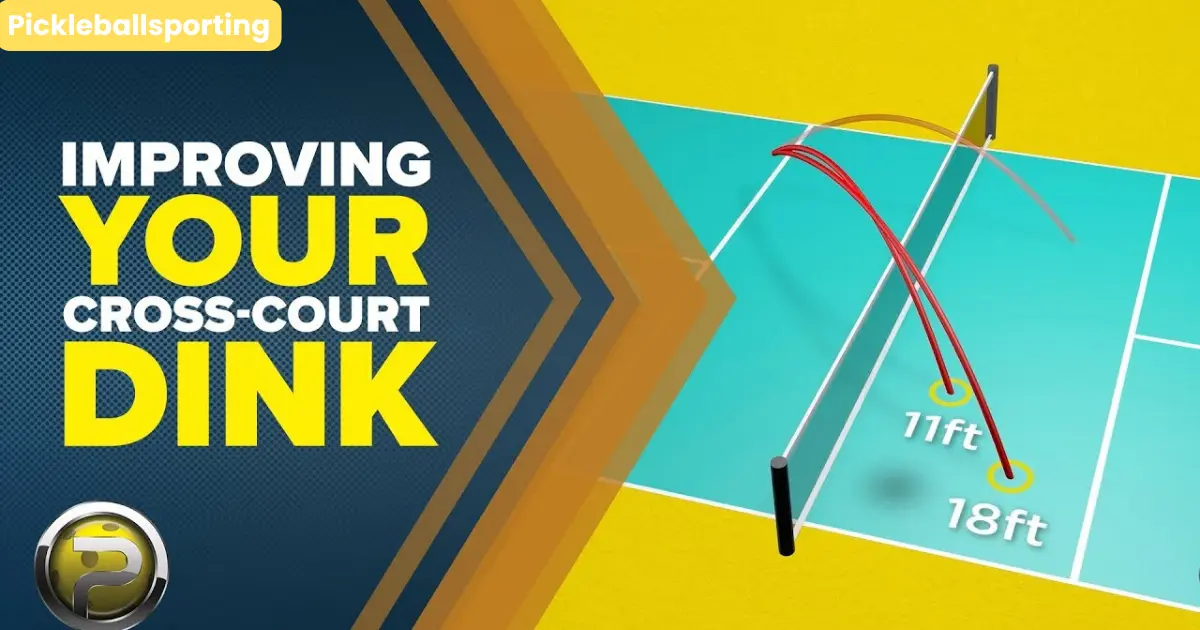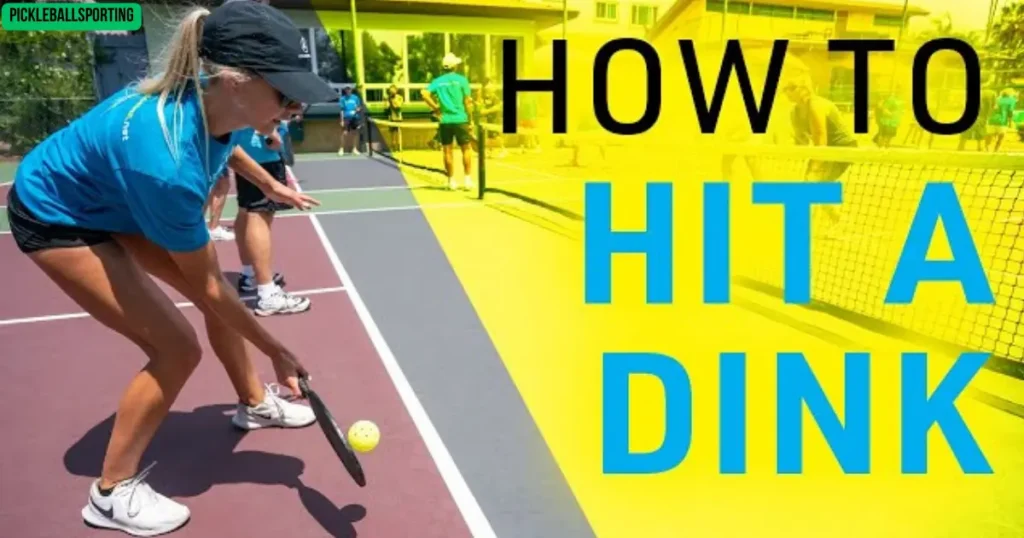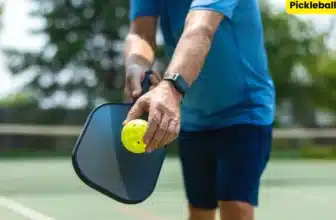
Pickleball’s popularity is rising across the U.S. It attracts players of all ages. It’s becoming a major sports phenomenon, from neighborhood courts to national tournaments.
As with any other sport, Pickleball has its unique rules and strategies. Many beginners can feel dazzled by the game’s technique. One term that often puzzles beginners is the “Dink shot.” The Dink shot in Pickleball is a clever, strategic move that can significantly boost your game.
In this article, let’s explore the Dink shot and discover how learning this technique can take your pickleball skills to the next level.
What Does Dink Mean in Pickleball?
In pickleball, the “dink” means a gentle, controlled hit. It just clears the net and lands in the non-volley zone, often called the kitchen.
In simple terms, we can say the dink shot is a clever move that can disrupt your opponent’s rhythm. It will give you an advantage. It’s not about hitting hard but about playing smart. Getting the dink can make your game more strategic and help you win more matches in pickleball.
Key Points of the Dink Shot:
- Soft and Delicate: The dink is a light tap that drops the ball softly over the net.
- Kitchen Play: It lands within the non-volley zone, making it tricky for opponents to return aggressively.
- Focus on Control: The dink shot is all about finesse, not force.
Why Use the Dink Shot?
- Slows Down the Game: The dink shot gives us a chance to control the game’s flow. It reduces the speed, and due to this move, we can win the game.
- Challenges Opponents: By keeping the ball low and close to the net, it becomes tough for opponents to make strong returns.
- Sets Up for Success: The dink can help you create openings for more strategic plays, like a surprise volley or a quick drop shot.
Advantages of Dink Shots:
Here are a few noteworthy benefits of executing a dink shot in pickleball.
- Dink shots are great against aggressive players as they slow down the game.
- Opponents tend to return dink shots upward to clear the net.
- Power players may struggle, hitting the dink return into the net or out of bounds.
- Expect your opponent to keep dinking the ball back to you.
- The dinking exchange continues until someone makes a mistake, hitting the ball too high and far.
- Patience is key; wait for your opponent to make an error or set you up for a powerful smash.
When is the Ideal Moment For Using the Dink Shot?
The dink pickleball shot is typically brought into play around the fourth shot. In a typical pickleball sequence:
- The first shot is the serve.
- The second shot is the return of serve, usually sent deep down the middle.
- The third shot is a drop shot, strategically placing the ball into the kitchen to allow the serving team time to reach their own kitchen line.
- Opting for a dink on the fourth shot is a smart move, especially if the serving team has executed a well-placed drop shot. It becomes challenging for the opponents to make an aggressive return, making the dink pickleball a safer and often more effective play.
How to Hit a Dink Shot in Pickleball?

Wondering how to hit a dink pickleball shot? Here’s the best method for hitting a dink shot:
- The dink works best against opponents in a pickleball game who are hard-hitting. In a fast-paced, hard-hitting rhythm, the dink slows things down, helping you score. So, choose your opponents carefully.
- Dink shots are often played when returning a drop shot. So, let the ball bounce once, reach its apex, and begin to fall before hitting it.
- Dink shots are best hit with an open-faced paddle and a light grip. So, use the right grip. This will allow you to hit soft underhand shots.
- Your aim has to be a little over the net. This will give you a margin of error. Let your opponent make the mistakes.
How can Get Perfect with the Dink Shot in Pickleball?
Executing the Perfect Dink Shot
1. Grip Matters:
- Start with a proper grip on the paddle – a continental grip or an eastern backhand grip works well for dinking.
2. Approach the Net:
- Move towards the net to reduce the angle of your shot and increase the likelihood of a successful dink.
3. Soft Touch:
- Use a gentle touch when striking the ball, ensuring minimal force to keep it low.
Dink Pickleball Shot Dynamics
1. Strategic Placement:
- Aim for the opponent’s non-volley zone to limit their options.
2. Rhythm Disruption:
- Integrate dink shots to break the opponent’s rhythm and force errors.
3. Setting Up Plays:
- Use the dink as a setup for more aggressive shots or to control the pace of the game.
It’s a move that requires finesse, control, and a deep understanding of court dynamics. The dink is not just a shot; rather, consider it a strategic element in pickleball that can turn the tide in your favor.
Final Thoughts
So, to wrap it up, think of the “dink” in pickleball as your secret weapon for finesse. Don’t consider it merely a shot. It is like that perfect spice that elevates the whole game. When you master the dink, you are essentially adding a layer of control and strategy to your play. Trust us, whether you are just starting or you have been at it for a while, incorporating the dink makes pickleball more enjoyable and keeps things interesting on the court.
Frequently Asked Questions
What is a dink in Pickleball?
Dink” meaning pickleball is a soft and controlled shot executed close to the net, designed to barely clear the net and land within the non-volley zone. It’s a finesse move that prioritizes touch over power.
How Do You Execute a Dink Shot in Pickleball?
To execute the perfect dink pickleball shot, ensure a proper grip on the paddle, move towards the net to reduce the shot angle, and use a soft touch to keep the ball low. It’s all about finesse and strategic placement.
Why is the Dink Shot Important in Pickleball?
The pickleball dink shot is crucial in pickleball for several reasons. It disrupts the opponent’s rhythm, limits their options by aiming for the non-volley zone, and sets the stage for more strategic plays. It adds a layer of finesse and control to your game.
When Should I Use a Dink in Pickleball?
Use the dink strategically during play to break the opponent’s rhythm, create openings for aggressive shots, or control the pace of the game. It’s particularly effective when you want to introduce variety and keep your opponents on their toes.






